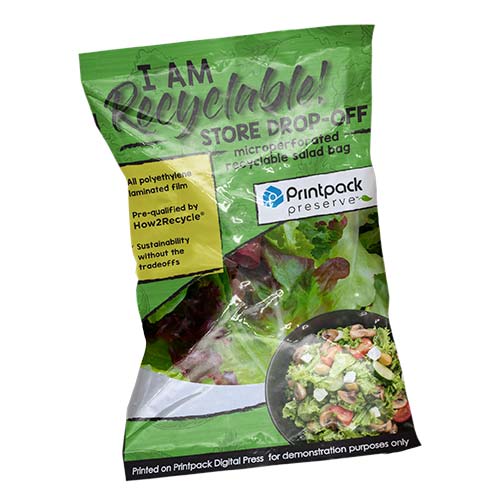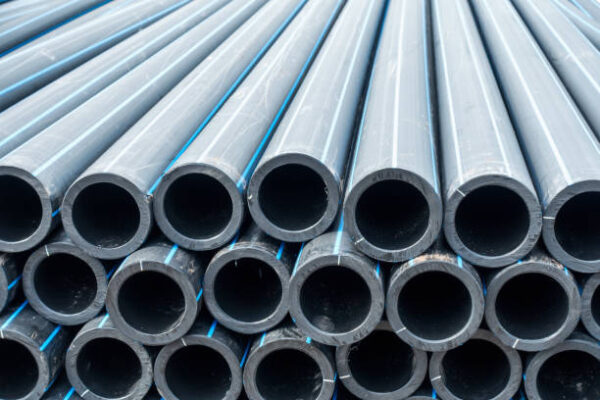Good Growth Forecast for Flexible Polyolefin Packaging and Pipe

Reports highlight benefits, market share and value of PE packaging and HDPE pipe
When SPE’s annual International Polyolefins Conference convenes next year (Feb. 18 to 24, in Galveston, Texas), there should be optimism about business conditions in two key markets: flexible polyethylene, a mainstay of packaging, and HDPE pipe—at least according to the findings of two recent market reports.
The U.S. flexible PE market is projected to reach $20.8 billion in 2030 by Research and Markets, of Dublin, a compound annual growth rate of 4.8 percent from 2023.
The global HDPE pipe market should generate $32.2 billion in 2028, according to IMARC Services Pvt. Ltd., of Brooklyn, N.Y., a CAGR of 4.9 percent from 2022.
Both reports attribute growth to developments in resins, application needs and product designs, as well as ongoing efforts to promote sustainability by OEMs and brand owners.
Flexible PE Packaging Will Benefit From Online Buying
The flexible PE market will see sizeable growth by 2030, largely propelled by a surge in packaging, states Research and Markets in its study, “U.S. Flexible Polyethylene Market, Size, Share and Trends Analysis Report …”
“Online shopping and e-commerce continue to skyrocket, there is an ever-increasing demand for flexible and cost-effective packaging materials,” the report notes. “This rise in consumerism translates to higher use of flexible PE in various packaging applications, such as bags, films and wraps, making it a key driver for market expansion.”
Another force behind growth of the market lies in concern for the environment. With the emphasis on sustainability and eco-friendly packaging, manufacturers are exploring innovative biobased and recyclable flexible PE products.
The demand for green packaging will surge, creating opportunities for greater adoption of flexible PE in a range of industries. Coupled with advances in technology and potential regulatory changes, the future of the U.S. flexible PE industry looks promising as it adapts to evolving market dynamics and consumer preferences.
Flexible HDPE was a highly penetrated segment accounting for over 38 percent of total PE market share in 2022, due to its exceptional properties that cater to diverse applications. HDPE offers an excellent combination of strength, flexibility and chemical resistance, suiting it for consumer goods packaging and for construction purposes. Its widespread use in bags, films, wraps, geomembranes and pipes demonstrates versatility across industries.
Food and beverage is a highly penetrated end-use segment accounting for more than 30 percent of total PE market share in 2022. This is attributed to the critical role of flexible packaging in preserving and protecting food products. With the rising trend of convenience and on-the-go consumption, there is an increasing demand for flexible packaging solutions like bags, pouches and wraps.
Flexible PE’s barrier properties protect against moisture, air and contamination, extending the shelf life of perishable goods. Moreover, its light weight and cost-effective nature make it an ideal choice for food manufacturers and retailers seeking efficient and economical packaging. As the food and beverage industry evolves, demand for flexible PE packaging will grow and consolidate its dominant position in the U.S.
Bags and pouches accounted for more than 32 percent of PE market share in 2022. This owes to their widespread applications and convenience in markets. These products offer versatile packaging solutions, meeting the diverse needs of consumers and businesses.
From grocery shopping to industrial packaging, bags and pouches provide a lightweight, durable and cost-effective option for containing and protecting goods. Their popularity in retail, especially in the food and beverage industry, is due to their ability to maintain freshness, prevent spillage and ensure easy handling.
Additionally, bags and pouches’ adaptability in industrial applications, such as for chemical or pharmaceutical products, further cements their dominant position in the U.S. market, reflecting an integral role in packaging solutions.
Highlights of the report include:
- The flexible HDPE segment accounted for the largest market share, over 41 percent in 2022, due to its strength, flexibility and chemical resistance.
- The food and beverage segment held more than 30 percent of market share in 2022, due to its reliance on flexible PE packaging for preserving and protecting food products.
- The bags and pouches segment saw substantial growth in 2022 with more than 32 percent of market share. This is attributed to the lightweight, cost-effective and versatile nature of most applications, which make them a preferred choice for various industries.
- Moreover, due to developments in the semiconductor industry, which result in high demand for flexible PE in insulative devices, the electrical and electronics segment is expected to grow with a CAGR of 3.8 percent during the forecast period.
Infrastructure Needs Drive HDPE Pipe Applications

Infrastructure repair will have a positive effect on the growth of the HDPE pipe market in coming years. Courtesy of IMARC Services
Expansion of the HDPE pipe market is propelled by increasing demand for sewage disposal infrastructure to manage decomposable materials and waste forms effectively.
In the report from IMARC Services titled, “HDPE Pipe Market Size 2023: Global Share, Growth, Industry Trends and Report Forecast by 2028,” the consultant notes that market growth is also affected by the growing need to repair and replace pipelines.
Additionally, the widespread adoption of HDPE pipe in agriculture for applications like flow line irrigation, drip irrigation and pesticide spraying systems is a major factor in market growth. Moreover, the growing preference for HDPE pipes to transport effluents, acids, alkalis and slurry, owing to the resistance of pipes to corrosion and abrasion, stimulates market expansion in chemicals and related markets.
Another important and growing application is protecting optical fibers and cables.
And the introduction of HDPE pipe variants with freeze-break resistance properties that assure the safety of potable water, will further drive market growth in coming years.
